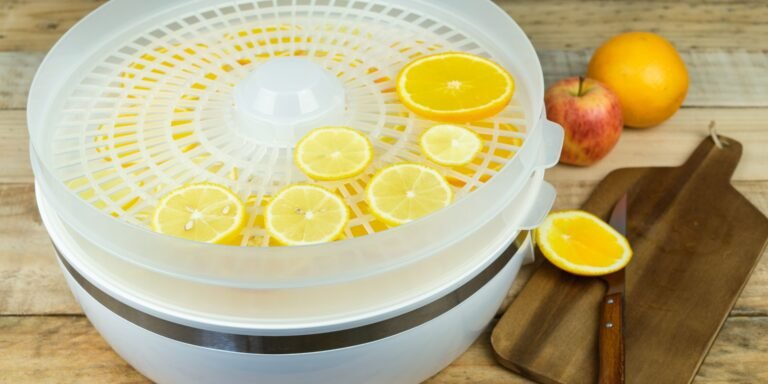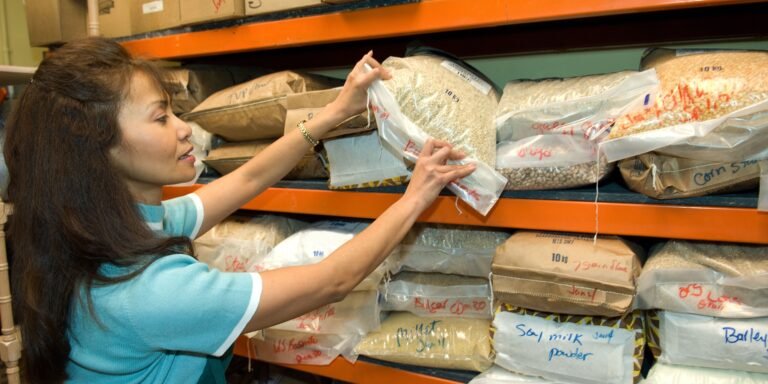How Long Does Powdered Milk Last When Stored Correctly Long Term
This post may contain affiliate links, full disclosure here.
Powdered milk is a staple in many households across the country.
You could have a package stashed away at the back of your pantry. It’s really popular and well-liked. It’s also a dry product, which is a plus. So most ordinary people would prefer to assume that nothing could possibly go wrong.
However, if you’re worried about food illness, you should stick to the “best before” date printed on the container. Is the “best before” date, on the other hand, a reliable indicator of when our favorite powder milk will expire?
Milk is another processed food item that has become more popular as food processing has increased. Because of its shelf life and ability to travel, milk powders are a practical and viable alternative to fresh milk.
Evaporated milk is what powdered milk is. Most processed products’ shelf life is extended by sucking out the moisture. So you come to discover a bag of powdered milk in the back corner of your cabinet, wondering if it’s still usable?
The majority of powder milk has a one-year shelf life. However, as we’ll see below, this varies greatly depending on the manufacturer.
The dehydrated milk, on the other hand, has a shelf life comparable to that stated on the label. As a result, you’re probably good to go with a ten-year-old packet of milk powder. There may be a change in taste or color, but it is most likely safe to eat.
See also: How To Store Quinoa Long-Term
Shelf Life Of Powdered Milk
Variables such as average temperature conditions, moisture content, packaging, storage, and handling determine the shelf life of processed items.
Food packaging plays an important role in influencing the lifetime of food products by protecting them from moisture and temperature extremes. In the case of dairy products, multi-layer packaging is commonly used.
While most powdered milk manufacturers recommend an 18-month shelf life for their goods, powdered milk actually has a significantly longer shelf life than stated on the packets.
The labels “Best by” and “Use before” suggest an average or minimum amount of time for the product to be of acceptable quality.
Of course, after they’ve opened, the factors alter, as do the days until they’re safe to eat. In most cases, 3-4 days is the best time to consume opened powdered milk.
The shelf life of powdered milk is also determined by its content. There are certain nonfat powder milk variants that have a substantially longer shelf life. The reason for this is that the fat component is less stable by nature.
Powder milk, in general, has a longer shelf life, lasting months or years if stored and utilized properly. These are producers’ estimates, thus they may differ from one to the next depending on what they believe is a safe margin for utilizing the product without losing its original flavor.
As a result, you might come across some products with a two-year best before date and eternal packets with a shelf life of up to 25 years!
It’s crucial to remember that powdered milk, like any other product, may lose some of its features and properties over time. Consider the additional vitamin D and A. The majority of dairy products, whether processed or fresh, are intended for human consumption.
Added preservatives, artificial flavouring, and nutrients, on the other hand, will decay over time, resulting in some flavour loss. As a result, it is desirable to take powdered milk as soon as possible in order to get the maximum benefits of its nutritious value.
See also: Shelf Life Of Wheat Berries
How To Prolong Shelf Life Of Powdered Milk
By its sheer nature, dehydrated milk will survive considerably longer. Maintaining and increasing the shelf life of items, no matter how delicate they may be, entails storing them in the right conditions and atmosphere.
Extreme or inappropriate conditions result in a reduction in product quality and flavor. In general, food goods react to air and moisture, changing their quality and other attributes (Color change).
The science of keeping dry materials is straightforward: keep them dry, cool, and dark. The powder will not come into contact with moisture if it is stored in a dry location. Because the items are processed to remove the moisture content, this is the case.
Wet conditions are more likely to change the qualities of the powder and spoil it. As a result, maintaining it in an airtight and vacuum-like environment is preferable. After opening the package, it should be carefully packed after use. The powder should be swallowed as soon as possible after it has been combined with water. All of this is necessary to prevent the powdered milk from clumping.
A dark spot is also necessary to keep it away from the sun and excessive temperatures. The sun’s heat will undoubtedly induce a reaction in a variety of things. It may, in some situations, activate specific molecules in processed foods, causing them to expire sooner than expected.
As a result, a kitchen cabinet or refrigerator are both excellent storage options. Please keep it out of reach of burners, ovens, and other heat sources. Because of the benefits of a cool environment with minimal oxygen interaction, keeping the milk powder frozen in the freezer is also an excellent alternative. As a result, keeping the product at 0 degrees Fahrenheit will safeguard it and keep it useful for a long period.
The shelf life of milk powder can also be extended by following more general storage guidelines. When it comes to food goods and storage, hygiene is critical.
It is great to keep your products away from ant attacks or bacteria. Similarly, preventing pest infestations on your food is critical. It’s also vital to avoid storing your food products near stale stuff, which can swiftly destroy other items. Such things should be thrown away as soon as possible, and the pantry should be sterilized.
Another important habit is to keep the food goods in their original containers or cartons. Glass containers with tight lids, on the other hand, are a great option.
How To Know If Powdered Milk Has Gone Bad
Even though powdered milk has a longer shelf life than stated on the package, it is subject to spoilage if it comes into touch with water or air.
Another issue that could cause the powdered milk to degrade is the temperature. If your powder milk has come into touch with water, you will see that it has clumped together. It’s a sign that using powdered milk is no longer a good idea.
Discoloration and odor are both telltale indications of stale powdered milk. Water or bugs have most likely invaded the powder. Milk powder commonly gets a pale yellow tint when it goes rancid. It’s a warning that the product is no longer usable and should be thrown right away.
Another component is smell and taste. There’s also a potential that the power will emit an odd odor and taste. Finally, the powder was frequently attacked by an army of ants, rendering it unfit for consumption.
As a result, going by the label isn’t always the best decision, as your powder might be safe to eat. Consider using a small amount of an old packet to mix with water if it’s an old one.
One thing to keep in mind is that if you provide powdered milk to newborns, you might want to leave a safe margin to guarantee that your toddlers don’t get an upset stomach. Milk powders made specifically for babies must be consumed before the expiration date.
Another important point to consider when deciding whether or not to use a product that has passed its “best before” date is the brand. You might have some local sachets of milk powder, for example, but this is hardly a safe margin of safety. In this instance, it’s best to eat them as soon as possible.
Bottom Line How Long Does Powdered Milk Last
Food storage and handling can be a difficult tasks. It may necessitate extra caution, particularly with dairy products. You might be wondering if you can eat packaged foods after they’ve passed their “best before” dates.
However, as previously said, these dates are merely indicative. If these goods are stored properly, they can be consumed safely. The shelf life of products is extended when they are kept cool, dry, and dark.
One of the best ways to extend the shelf life is to freeze it. Unfortunately, because several factors are at play, determining the exact shelf life of such things is very impossible.
As a result, it is not only how consumers handle items, but also how packagers in factories, retailers, and transportation units handle them. Make sure you inspect your items for any symptoms of deterioration, just like you would with any other food item. The milk powder’s longevity is likely to be ensured by good hygiene and careful handling.




![How To Create An Emergency Food Stash For A Family Of 4 [With Example]](https://preparinginthecity.com/wp-content/uploads/2021/08/Example-Of-1-Year-Supply-of-Food-For-Family-Of-4-768x384.jpg)



